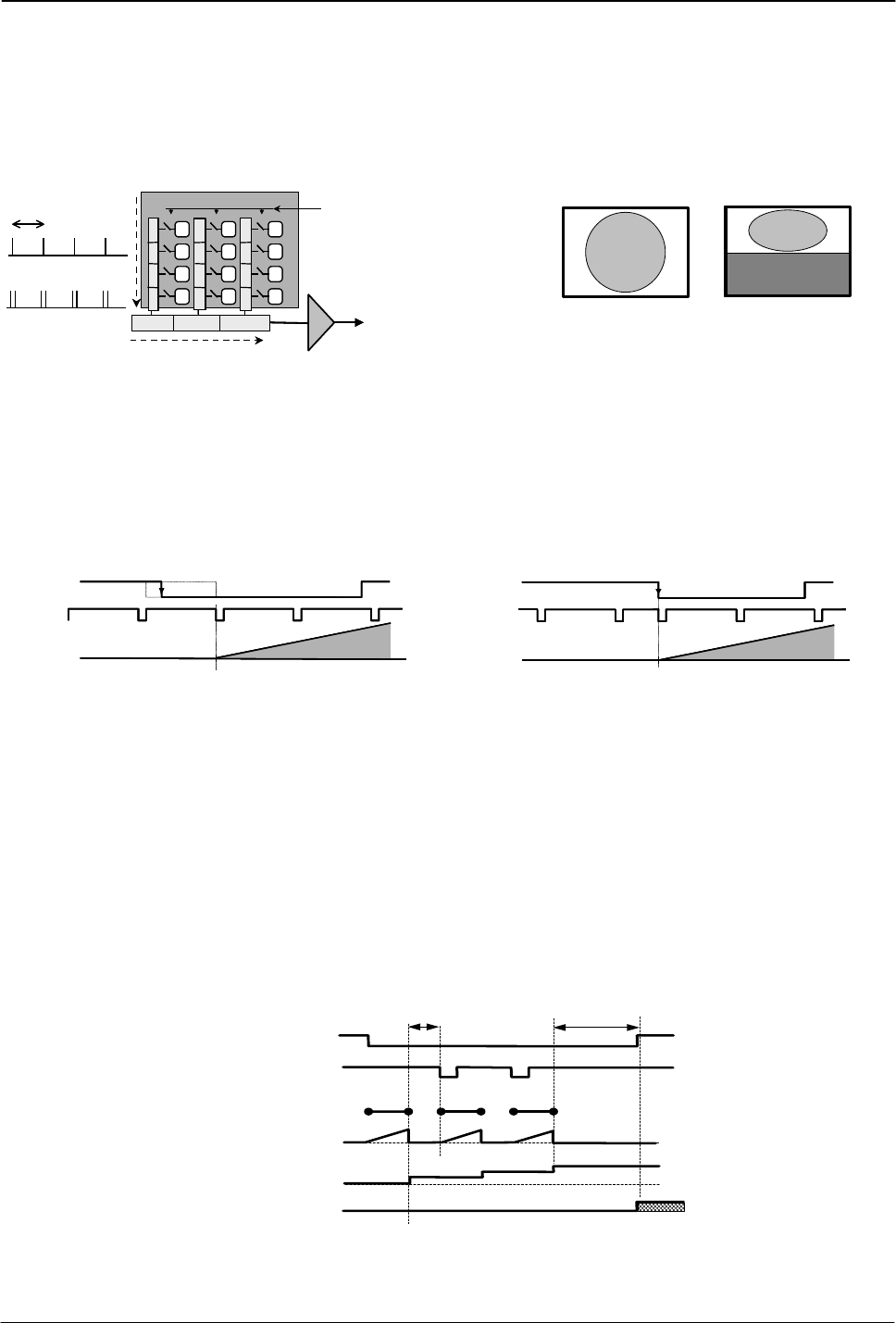
CV-M4
+
/M4
+
CL, CV-M7
+
/M7
+
CL
- 9 -
Binning mode is a function where the signal charge from 2 or more adjacent pixels are added
together and read out as one pixel. A resulting full frame with lower spatial resolution can be
read out with a higher rate, and higher sensitivity. The CV-M4
+
has vertical binning where the
pixel charge from 2 adjacent lines are added together in the horizontal ccd register. It is done
by double pulses to the vertical ccd register. Lowest shutter speed is 1/50. In binning mode H is
43.3 µ sec. Binning will only work for the monochrome cameras CV-M4
+
and CV-M4
+
CL.
1030 pixels
Normal full scanning.
Aspect ratio correct
1380 pixels
515 pixels
Vertical 2:1 binnig
1380 pixels
Aspect ratio not correct
1030 pixels
Normal full scanning.
Aspect ratio correct
1380 pixels
1030 pixels
Normal full scanning.
Aspect ratio correct
1380 pixels
515 pixels
Vertical 2:1 binnig
1380 pixels
Aspect ratio not correct
515 pixels
Vertical 2:1 binnig
1380 pixels
Aspect ratio not correct
Xsg1
Video
out
No V binning
V binning
H
Horizontal ccd register
V
e
r
t
i
c
a
l
c
c
d
r
e
g
i
s
t
e
r
Xsg1
Video
out
No V binning
V binning
H
Horizontal ccd register
V
e
r
t
i
c
a
l
c
c
d
r
e
g
i
s
t
e
r
Fig. 11. Binning.
H synchronous or H a-synchronous shutter. In H synchronous trigger mode, the accumulation
will start at the first internal HD pulse after the trigger leading edge. In HD a-synchronous
trigger mode, the trigger leading edge will immediately reset the internal H timing and start the
accumulation.
In H synchronous trigger mode and H a-synchronous trigger mode a new trigger must not be
applied before the previous frame is read out.
Int. HD
Trigger
Accum
H a-synchronous
Int. HD
Trigger
Accum
Int. HD
Trigger
Accum
H a-synchronous
Int. HD
Trigger
Accum
H synchronous
Int. HD
Trigger
Accum
Int. HD
Trigger
Accum
H synchronous
Fig. 12. H synchronous/a-synchronous trigger.
Multiple exposure is a function which allows several exposures with a short interval. The
exposures are all placed in the same frame. This function is useful for studies of high speed
events.
The trigger leading edge will start the first exposure (edge pre select). When it is finished, the
resulting charge is read out in the stopped vertical ccd register. With additional trigger pulses on
the multi exposure input, new exposures can be done. The charge from each is added on top of
the first charge in the stopped vertical ccd register. Up to 6 exposures can be done with multi
exposure. The trigger trailing edge will start the vertical ccd registers, and the video signal will
be read out. Fig. 13 shows the timing details.
TRIGGER
MULTIPLE
EXPOSURE
SHUTTER TIME
(fixed)
ACCUMULATION
CHARGE IN
V-REG
VIDEO OUT
open
open
open
>1H
>2H
12
3
Fig.13. Multiple exposure


















